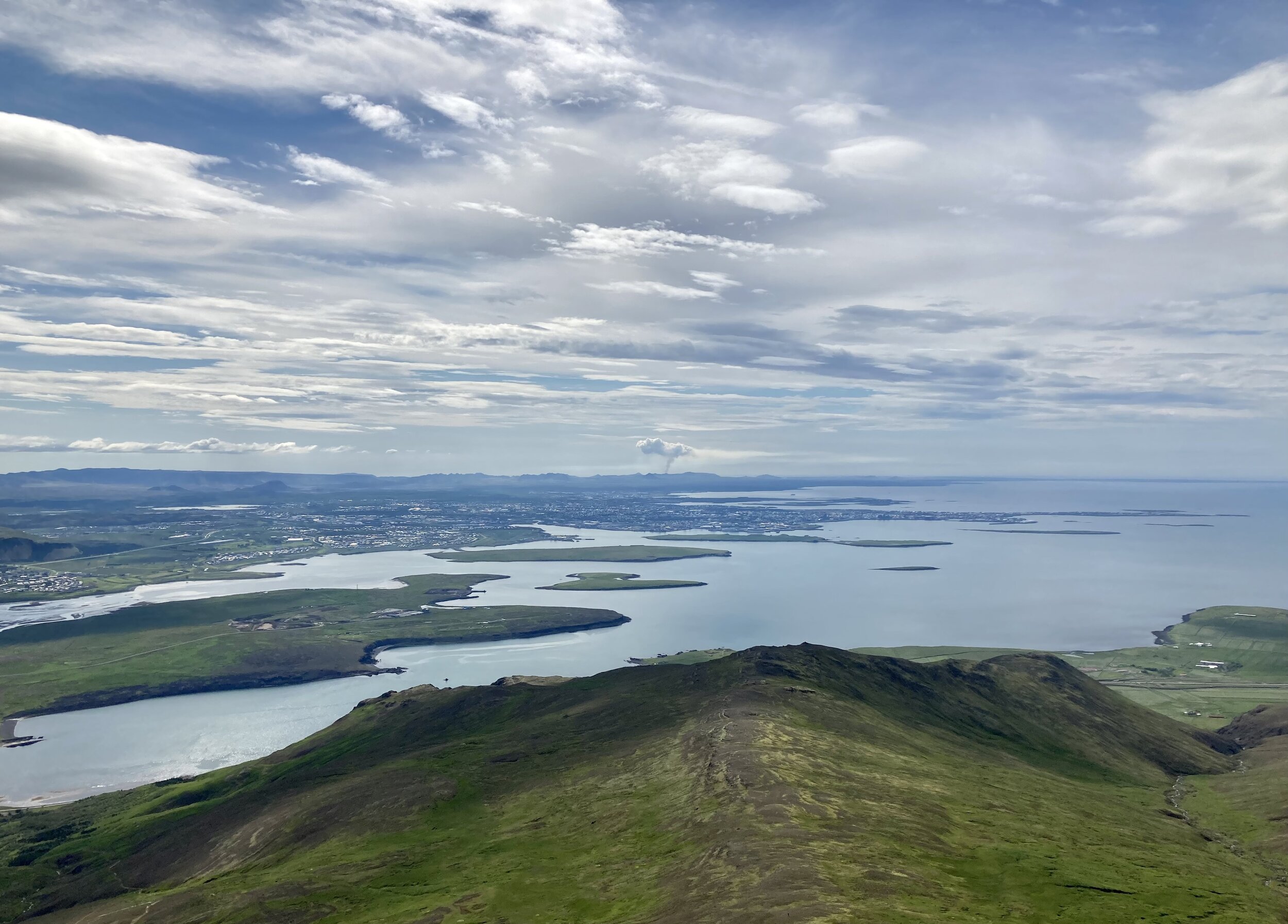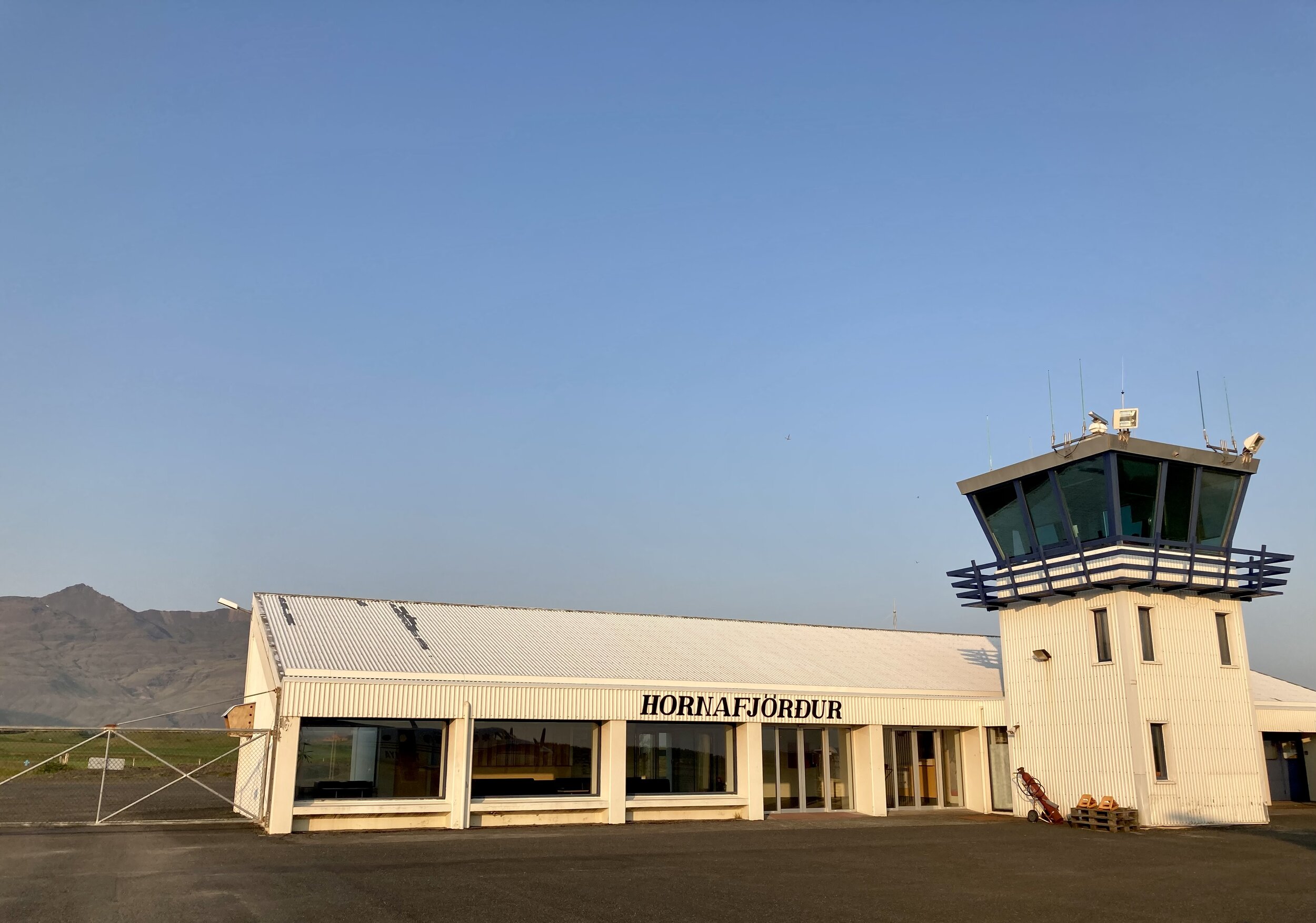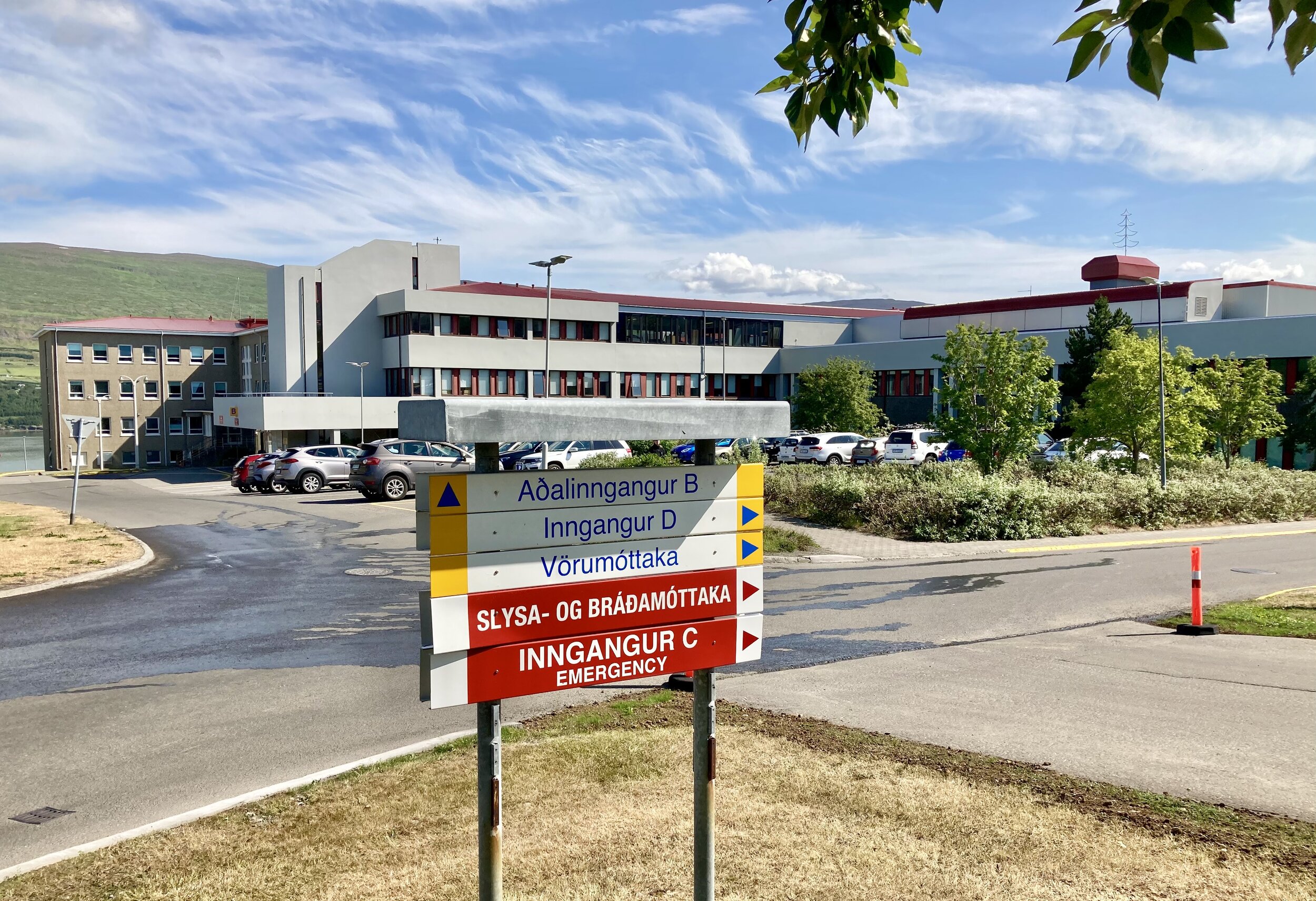An Insight into Iceland’s Emergency Medicine and Pre-Hospital Care Systems
Dr Ross Archibald, ST6 Emergency Medicine, South East Scotland Deanery
The last part of my Fellowship was scheduled to take place in the north of Iceland in Akureyri, the largest town outside the populous south west of the country and only 100km away from the Arctic Circle. From Reykjavík it’s a 400km drive on a stretch of Route 1, the ring road which runs all the way round the island. As always here, there is no shortage of stunning mountainous and coastal scenery to take in on the way!
Once I had arrived, my first stop was the small airport on the edge of town, where the air ambulance service is based. Due to Iceland’s sparse population, long transport distances and numerous small airports, the majority of aeromedical operations in Iceland is accomplished using fixed-wing aircraft. The Icelandic government contracts this service out to the airline Mýflug, based in Akureyri. Named after a local lake, the airline was established in 1985 and conducts air ambulance flights all over Iceland as well as international destinations including Greenland, Scandinavia and the UK. The airline flies around 700-800 air ambulance flights per year, around one third of which require a doctor on board.
I would be spending my week here on-call with Dr Barbara Hess, a Consultant Anaesthetist and Flight Doctor based in Akureyri. She began by showing me around the aircraft and its hangar, as well as the medical kit on board. The aircraft used for the air ambulance flights are two specially configured Beechcraft Kingair 200s, both on constant standby at Akureyri airport. Each aircraft has room for two patient stretchers, monitors and kit bags for medical equipment and medications. Flight times within Iceland are generally in the range of 30-60 minutes.
There is an air ambulance crew on call 24 hours a day, consisting of a captain, co-pilot, paramedic and doctor. When there is an activation, the team will generally respond from home (unless already on a mission), but as Akureyri is a small town and traffic is generally light, travel times to the airport are usually only a few minutes. There are currently seven flight doctors on the rota, with base specialties of EM, anaesthetics and GP. The doctors generally work stretches of 48-72 hours on call and it appeared that this was integrated and supported fairly well alongside their hospital work.
Requests for the air ambulance are usually made by a rural doctor or paramedic via the emergency services dispatch room in Reykjavík, at which point a triage category is allocated. The on call flight doctor and paramedic then receive a notification on their mobile phone that there has been an air ambulance request. After this there they will usually contact the requesting clinician by phone to obtain further information and give advice if required.
It was a busy few days on the air ambulance, with one of the days involving eight flights to all corners of the country. Landing at some of Iceland’s numerous small remote towns where medical facilities are limited, it was easy to see how vital the air ambulance was in connecting patients with the rest of the country’s health service. The patients we dealt with on our activations had a wide age range, from a 21 month old to patients in their eighties. The clinical issues were also varied, including STEMI, fractures, pulmonary oedema, seizures, psychiatric problems and post-operative complications. Most patients were being transferred from remote towns to Reykjavík or Akureyri for further care, but there were also patients being transferred back to their local community hospital for step down care (this was generally arranged opportunistically when the air ambulance was available).
It struck me that the whole process was very smoothly co-ordinated. After activation the aircraft was always waiting on the tarmac in Akureyri by the time the flight team arrived, and the pilots would have us airborne with minimal fuss in just a few minutes. On landing at the destination airport, there would always be an ambulance waiting to take the patient on the last leg of their hospital transfer, as well as an aircraft fuelling truck on standby. The loading and offloading of patients from the aircraft was also efficient and well-practised, with all members of the team involved. I could appreciate the rewards of working in this small close-knit team – not only through enabling unwell patients in remote and rural areas to access timely medical care, but also the regular added bonus of spectacular views of Iceland from the air!
In between air ambulance calls, I also managed to spend some time in the emergency department in Akureyri Hospital, which enjoys a scenic location looking over the fjord Eyjafjörður. This is Iceland’s second largest hospital and is the main centre for specialised services in the north and east of the country. There are wards on site for general medicine, paediatrics, psychiatry, surgery and maternity, as well as a five bed critical care unit, operating theatres and the emergency department. CT and MRI are both available during day time hours.
The emergency department sees around 18000 patients per year, although like many of Iceland’s rural health care facilities, they face the issue of significant attendance surges related to tourism. There are currently four consultant level doctors working in the department (3 full time equivalent), but this only allows for senior doctor presence during day time hours on week days. There is a plan to recruit a further senior doctor, but like some rural hospitals in Scotland, achieving suitable recruitment to these posts can be a challenge. In addition the department usually has an EM trainee doing a six month post (usually at ST1 level) and a small number of junior doctors and final year medical students rotating through. Out of hours medical staffing is generally provided by a combination of the department’s junior grades and the junior doctors covering inpatient medicine and surgery.
Although small, the department was well laid out along a single corridor, with a single large resus room opening directly into the ambulance garage. As in Reykjavík, there was no shortage of computers, work spaces and relaxation areas for doctors and nurses, and all equipment was well stocked and meticulously organised. There was plenty of clinical variety while I was there, with the day of the ED-led fracture and review clinic being especially busy. Fractures are a particularly common presentations here, particularly over the long snowy winters and given Akureyri has become a popular destination for activities like skiing and mountain biking. After a great week in the north and just a couple of days left of my time in Iceland, it was time to head back to the capital.
----------------------------------
Once back in Reykjavík I took the opportunity to do a final shift in Landspítali’s emergency department, which I realised as I was leaving, was also my last shift as an EM trainee! I have certainly learned a lot from being immersed in the health care system here and it has struck me that our respective departments and trainees could gain a lot from increased collaboration. I hope to maintain the link that the Robin Mitchell Fellowship has helped establish, by setting up the opportunity for other Edinburgh EM doctors to come here in future, as well as for Icelandic EM trainees to do some of their training in Edinburgh. Watch this space!
I feel fortunate to have gained such an in-depth perspective of how Iceland meets the clinical and logistical challenges of pre-hospital care, as well as how this may evolve over the coming years. I am also grateful of how incredibly welcoming, friendly and accommodating everyone has been during my time here. Reflecting on the last five weeks, it has undoubtedly been a highlight of my time as a doctor in training and an experience I will continue to draw upon for many years to come.
----------------------------------
I would like to extend my gratitude to the Robin Mitchell Fellowship Trustees for their support in making this experience possible. A special thanks go to my supervisors in Reykjavík and Edinburgh respectively, Dr Hjalti Már Björnsson and Professor Richard Lyon, as well as to the many others who have been instrumental in making this Fellowship a success: Dr Viðar Magnusson, Dr Barbara Hess, Dr Mikael Mikaelsson, Dr Jón Pálmi Óskarsson, Dr Zoe Rochford and Dr Ármann Jonsson. Lastly, thank you to all the excellent and helpful staff in the emergency departments, ambulance and aeromedical bases I visited. I look forward to visiting again soon.





